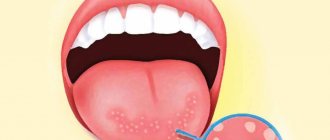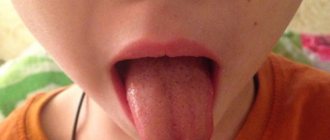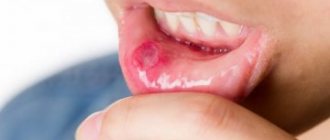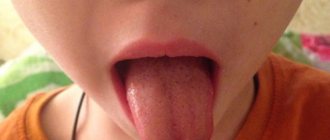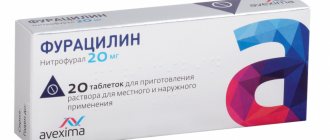With a painful rash in the mouth that occurs with stomatitis, the next meal can be a serious challenge. But in such a situation it is still impossible to refuse food, because it supplies the body with everything that is required for normal life. And while adults can still somehow endure it, in children, due to a low pain threshold, their overall well-being is impaired. Because of the pain, the child refuses to eat, as a result of which he may lose weight (which is especially harmful for infants). And to make it easier for the baby to survive this difficult period, you need to know what to feed a child with stomatitis.
What to feed a child with stomatitis
What is a disease
Stomatitis is considered a lesion of the oral mucosa.
The reasons for the development of this pathology are:
- infection by infections (viruses, bacteria, fungi);
- medicines;
- autoimmune processes.
Children develop painful ulcers in their mouths. They are quite deep, but heal without scarring. If the baby has immune disorders, then the ulcerative process is continuous. Previously formed ulcers simply do not have time to heal before new ones appear. The acute process becomes chronic. That is why it is important that nutrition for stomatitis is gentle, at the same time complete and varied.
Why do you need a diet for stomatitis?
In patients with severe pain, eating is difficult. The unpleasant sensations are especially pronounced in lesions of an ulcerative-necrotic nature, when the oral cavity has deep lesions. Consult a doctor! The dental clinic will develop a therapeutic program for each patient. When the mouth is in this condition, the patient may refuse to eat, which has a detrimental effect on health. After all, the body spends a lot of energy when it is sick. It is needed to maintain body temperature, the production and release of active agents, and the synthesis of antibodies. That is why it is important to eat right and replenish lost nutrients. However, the diet must be correctly composed; not every product should be included in the menu.
General diet rules
A special feature of the diet for this oral disease should be food that is as neutral as possible and does not irritate the mucous membranes. It should be well crushed and have an enveloping and slimy consistency.
When organizing meals for a baby with this disease:
- It is necessary to adhere to small, frequent meals. Portions should be small, and the frequency of intake should be five or six times a day. It will be easier for the baby to eat a small portion, and it will be easier for parents to feed him.
- All food should be crushed as much as possible, and the consistency should resemble puree. Meat and fish are used only in the form of minced meat. The temperature of the food should not be higher than forty degrees, neither hot nor cold.
- Before eating, you can treat the child’s oral mucosa with products containing painkillers. You can use: Kamistad, Kalgel, Cholisal. Also, for pain relief before eating, you can give your baby Ibuprofen or Paracetamol. They will numb the mucous membrane in the mouth. You can safely feed your baby.
- After eating, be sure to rinse your mouth with water at room temperature. Then the mucous membrane is treated. For this, any disinfectant solutions are used (Furacillin, Chlorhexidine, Stomatofit, Miramistin). To do this, you can use decoctions of chamomile or sage herbs. This is done in order to disinfect the lesions and prevent the development of a secondary infectious process.
- It is necessary to apply oils to the mucous membrane that have the ability to activate reparation (recovery) processes.
It is impossible to cope with the disease with diet alone; it must be treated.
General rules of nutrition for stomatitis
The nutritional rules for this disease are not complicated, but require careful implementation. The set of standards includes:
- Meals should be fractional.
- If you have stomatitis, you can’t eat three times a day, it’s not physiological. With this regime, the gastrointestinal tract is overloaded.
- Food is taken every 3 hours; you need to eat 5-6 times a day.
- Gentle nutrition does not irritate the mucous membrane and does not cause pain.
- Products should be crushed as much as possible. Meat and fish are processed into minced meat, berries and vegetables into puree.
Sour fruits are prohibited, as they provoke the development of bacteria. Increased sensitivity of the mucous membrane does not allow the use of spices and sauces. Alcoholic drinks and pickles are excluded from the menu so as not to provoke pain or discomfort. Bitter and sweet foods should also not be consumed.
Heat treatment
But with stomatitis, you can eat dishes that have been heat-treated. This is not only not harmful to the inflamed oral cavity, such food is beneficial for the whole body. After boiling or stewing, the food should cool down. Its optimal temperature during administration is from 37 to 40 degrees. Slightly warm foods are the same temperature as the body. The priority is vegetable soups, casseroles, and purees. Many delicious dishes can be prepared if you use this culinary method, stewing. You need to avoid foods that are too cold or too hot.
Liquid and semi-liquid food
- For a while you will have to forget about solid food: crackers, nuts, seeds, candies.
- Even fruit compotes and juices must be filtered. This is necessary so that pieces of fruit do not get into the wounds and rot.
- Soft tissues are especially sensitive to dry dishes that contain foods with sharp edges. In order not to cause harm to the inflamed mucous membrane, they should be washed down with water or excluded from the menu.
Remember that solid foods that require careful, long chewing should not be consumed if you have this disease. If you have a strong desire to eat hard food, it needs to be chopped or ground immediately before consumption.
Oral care before and after meals
Dental treatment is the main component of preventing the occurrence of inflammatory processes in the oral cavity. A timely visit to the dentist will minimize complications from caries and will allow you to preserve your incisors, canines, and molars. Hygiene procedures are no less important for health. Mandatory morning and evening cleaning of the chewing organs. To do this, you must choose the right toothpaste and brush. When treating the disease, you need to use a brush with soft bristles.
Each meal should be completed with a thorough cleaning of the oral cavity, that is, rinsing. Consult your doctor which pharmaceutical product is suitable for your case. Antiseptic rinses provide disinfection, relieve inflammation, and do not allow pathological bacteria to multiply. You can rinse your mouth with a solution of soda or warm boiled water.
Authorized Products
The diet for stomatitis in children includes certain foods that do not irritate the oral mucosa.
Proper nutrition includes:
- Vegetables (boiled, baked, steamed) - dishes made from them do not injure, do not irritate, and at the same time provide the body with vitamins and minerals. It is recommended to take vegetables with a delicate structure (broccoli, zucchini, potatoes, pumpkin).
- Fermented milk drinks and products should definitely be included in the child’s diet, but they should not contain a lot of acid. It is worth giving preference to soft neutral cottage cheese, Varenets, and fermented baked milk.
- Cereals - they are used to prepare porridges. They have an enveloping effect. They provide the body with B vitamins. The cereal must be well boiled.
- Fruits – usually choose moderately sweet, neutral, non-acidic fruits. It is better to take bananas, watermelons, melons, crumbly sweet varieties of apples and pears.
- Fish dishes - for their preparation, it is advisable to use fatty varieties of sea fish. To prepare either minced fish or steam it, remove all the bones so that the baby cannot injure the oral mucosa. Fish is a source of easily digestible protein, vitamins, microelements and polyunsaturated fatty acids.
- Meat dishes - only soft, lean types (veal, rabbit, chicken, turkey) are used to prepare them. When cooking, it is better to prepare minced meat products. Steam them or bake them in the oven. You can cook: soufflé, cutlets, meatballs.
- Liver - it can sometimes replace meat dishes; it is also better for preparing cutlets, soufflés, pates and similar dishes.
- Casseroles - can be prepared from vegetables, cereals, pasta, cottage cheese.
- Soups and broths – puree soups and low-fat broths are widely used in dietary nutrition.
- Soft cheeses are a good source of calcium. It is high in calories, easily digestible, and nutritious.
- Dried fruit compotes and jelly are a source of vitamins and microelements. It is better to replace tea with these drinks.
- Juices must be natural, freshly squeezed. To do this, it is better to take non-acidic fruits and vegetables (pears, apples, carrots).
The use of these products in a diet for stomatitis will make the diet high in calories and nutritious, at the same time gentle.
Features of nutrition of children with stomatitis
The diet for children is compiled depending on the severity of inflammation and the form of the disease. If the pathology is severe, the child should take liquid food. The menu consists of dishes that are rich in microelements and vitamins. This maintains body tone and activates the immune system. You can feed a child with stomatitis purees, jelly, and other baby food products. Their advantage is nutritional value, healthfulness, and pleasant taste. They are soft and easy to swallow.
In the acute phase
During an exacerbation:
- Any irritating foods are excluded: salty, sour, fried, sweet foods are minimized.
- Food should be slightly warm, semi-liquid. This is puree, cottage cheese, yogurt, milk.
- 4 meals a day are provided without additional snacks.
- The child should drink every hour. After medicinal treatment of the oral cavity, you need to wait 30-40 minutes. In addition to water, the menu may include fruit juices that do not irritate the mucous membranes.
If the disease is infectious, the baby is given a separate towel, toys, and dishes. Be sure to regularly ventilate the room where the little one spends time. It is important that parents monitor the health of their child. A timely visit to the dentist will make therapy easier and the recovery process will be faster. If periodontal tissues are damaged, periodontology can cope with their pathologies: diseases of the root system of units, bleeding gums, inflammation of the ligamentous apparatus of the masticatory organs.
During the recovery period
When the acute phase has passed, the diet expands.
- They select not only neutral-tasting vegetables and fruits, but also slightly acidic and slightly sweet ones.
- It is no longer necessary to wipe food, but it is still too early to eat rough food.
- The menu includes carrot and cabbage juices.
- Poultry meat is used to prepare meatballs and steamed cutlets, lightly salted.
- You can add bay leaf to the broth. This accelerates the healing of the mucous layer.
After the disease is cured, it is necessary to show the child to the dentist. He will give additional advice and instructions on preventing relapses of the disease.
Sample menu for the day
A sample menu is presented to help you understand what to feed your baby.
| Eating | Dishes |
| Breakfast | 1. Sweet oatmeal with milk and butter.2. Raspberry jelly. |
| Lunch | 1. Curd casserole with jam.2. Rose hip decoction. |
| Dinner | 1. Potato puree soup with meat broth.2. Steamed fish cutlet with zucchini puree.3. Dried fruits compote. |
| Afternoon snack | 1. Pudding with fruit puree |
| Dinner | 2. Chicken soufflé with stewed cabbage.3. A glass of Varentz. |
Food should be varied, dishes should not be repeated for at least seven days. Its task is not only to nourish the child in a gentle manner during the period of exacerbation of stomatitis, it should help strengthen the immune system and the body’s defenses.
When to see a doctor
Determining the type of disease in young children is the doctor’s task. The disease may begin with symptoms of ARVI, show signs of intoxication, lymph nodes may become enlarged (herpetic type) and nausea and vomiting may appear - these are reasons to consult a doctor so that stomatitis at 2 years of age can be treated correctly for a child, taking into account age. To prevent recurrence, it is recommended to strengthen the immune system, monitor oral hygiene and consult a doctor at the first symptoms.

